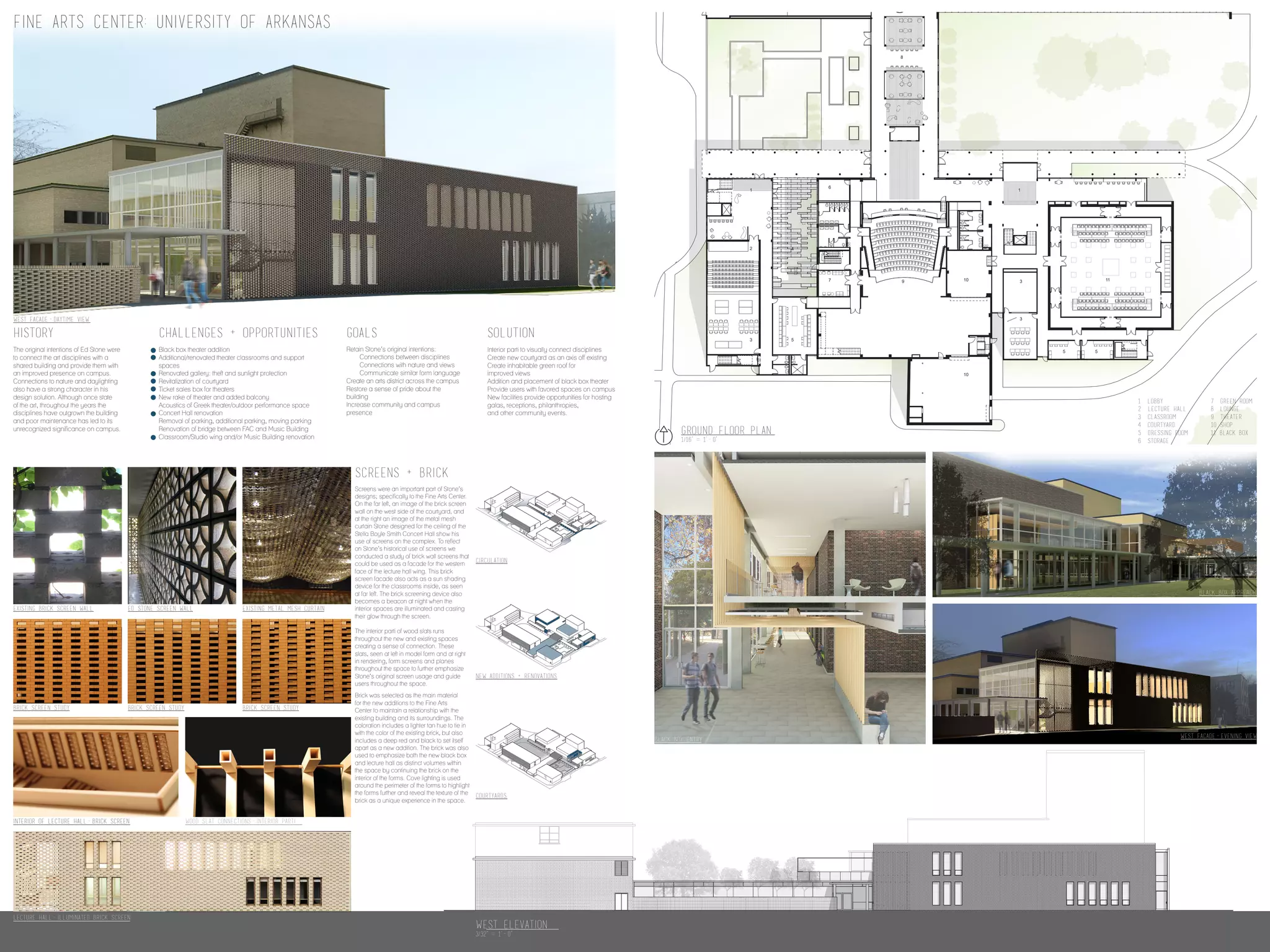The original Fine Arts Center at the University of Arkansas aimed to connect the art disciplines under one roof and improve their presence on campus. However, over time the building became outdated and maintenance deteriorated its significance. A renovation seeks to honor the original designer's vision of connections to nature and each other while upgrading facilities. The solution adds a black box theater and green roof, renovates classrooms, and installs an interior wood slat system to visually link disciplines as intended originally. Brick, a material used in additions and renovations, ties the new design to the existing building's context.
